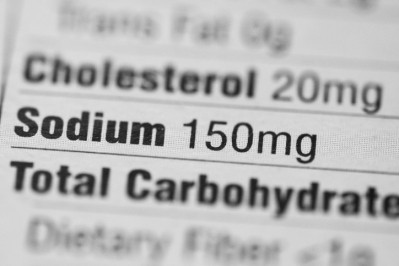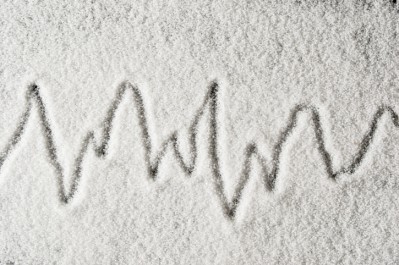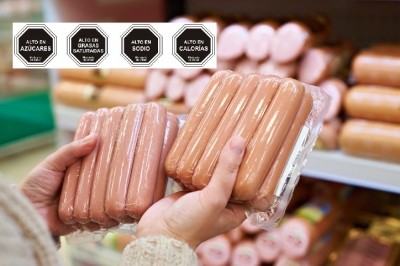LATAM needs stricter salt reduction targets: study

Published yesterday (11 February), the researchers examined data collected in 2015 and 2016, just after the Pan American Health Organization (PAHO), set harmonized voluntary targets for salt reduction in LATAM.
Collecting data from over 16,000 packaged food products sold in 14 Latin American and Caribbean countries, the researchers found that more than three-quarters of products in each country met the target levels.
Two countries, Chile and Cuba, had 92 and 90% of products meeting targets while Brazil, Costa Rica and Guatemala had the lowest proportion of products meeting targets with 77%, 77%, and 78% respectively.
‘More stringent targets needed’
However, the fact that packaged food companies are (mostly) hitting the targets is not necessarily a cause for celebration.
“Although there was significant between-country variation in the mean sodium content of packaged foods across food categories, in 2015 an overwhelming proportion of packaged foods (83%) at baseline were already meeting the regional targets and approximately half of the foods met the lower target,” write the researchers from the University of Toronto and the Costa Rican Institute of Research and Training in Nutrition and Health.
“[This suggests] that targets in some food categories need to be made more stringent to enable effective lowering of population sodium intake.”
Latin America has one of the highest rates of hypertension in the world - it causes nearly one-fifth of deaths in the region – and dietary salt intake a leading cause.
The PAHO targets:
Bread: Regional target: 600 mg Na / 100g with a lower target of 400 mg Na / 100g
Cookies and biscuits: 485 mg Na / 100g; or a lower target of 265 mg Na / 100g
Ambient dry-cured meats: 1,900 mg Na / 100g or a lower target of 1,350 mg Na / 100g
To see the targets for each category, click here.
Big regional differences
The survey also revealed huge differences in the same food categories between countries. The median sodium level for condiments in Cuba, for instance, was 434 mg per 100 g but 19,600 mg in Paraguay.
Cheese had a median sodium level of 482 mg in Chile compared to 1,146 mg in Ecuador while cookies and biscuits had 183 mg in Chile and 677 mg in Peru.
“While sodium added through table salt or seasonings remains a significant source of dietary sodium in some LAC countries, the consumption of packaged and prepared foods is increasing.
“This places significant importance on food supply interventions aimed at limiting or reducing the amount of sodium added to packaged and prepared foods; emphasizing the need for sodium reduction targets.”
According to the researchers, their study, which was partly funded by PAHO, is the first to comprehensively assess sodium levels in packaged foods sold in Latin American and Caribbean countries.
The countries studied were Argentina, Barbados, Brazil, Chile, Costa Rica, Cuba, Ecuador, Guatemala, Jamaica, Mexico, Paraguay, Panama, Peru, and Trinidad and Tobago.
The WHO recommends that people eat a maximum of 2000 mg sodium or less than 5 g salt, equivalent to less than a teaspoon. Most Latin Americans, however, are eating too much salt.
In Argentina, the estimated salt intake is 11.2 g per day. In Brazil, this is 12 g a day and in Colombia, it is 19.9 g each day.
The rise of processed food in many Latin Americans’ diet is also contributing to higher salt intake. A 2011 study estimated that up to 70% of Argentinian’s dietary sodium comes from processed food, with one-quarter of this from bread.
Meanwhile, 96 food items are responsible for almost three-quarters of Colombians’ sodium intake, according to research from 2015.
The findings
Uncooked pasta and noodles had the greatest proportion of products meeting the regional target with 98% compliance, followed by flavored cookies (97%), seasonings for meals (96%), mayonnaise (94%), and cured or preserved meats (91%).
Condiments had the highest median sodium levels with 7,778 mg per 100 g of product. This was followed by processed meats (870 mg), mayonnaise (755 mg), bread products (458 mg), cheese (643 mg), and snacks (625 mg).
Uncooked pasta and noodles had the greatest proportion of products (98%) meeting the regional target, followed by flavored cookies (97%), seasonings for meals (96%), mayonnaise (94%), and cured or preserved meats (91%).
Source: Nutrients
Published online 11 February 2019, doi: 10.3390/nu11020369
“Sodium Levels in Packaged Foods Sold in 14 Latin American and Caribbean Countries: A Food Label Analysis”
Authors: J. Arcand, et al.











